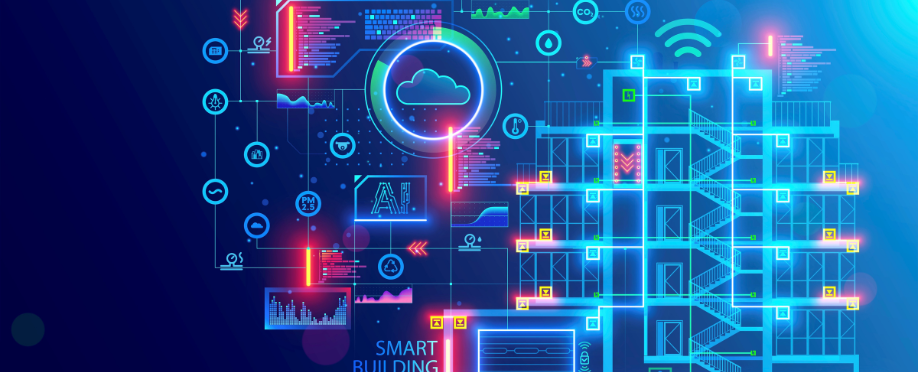
With technology evolving at a rapid pace, facilities management is quickly transforming into a less labor-intensive and more efficient industry. But with so much change and a confusing market for solutions, how do you know which facility management software is the right fit for your company’s needs? Keep reading for some insights into this hot topic.
FM Software: The Challenges
Overall, many facilities tools have the general functionality to serve the core needs of their building and equipment maintenance operations. However, the systems may be difficult to use, poorly integrated, and limited in asset management capabilities. Additionally, many facilities leaders are dealing with aging software that lacks the advanced capabilities they need and is expensive to maintain and integrate with other systems.
“The biggest gap we see is that companies don’t have a single asset management system. They have a CAFM or CMMS, but they’re not using asset tagging. Even those with tags aren’t using those fully for forecasting and managing asset lifecycle costs,” said Tony Parkinson, senior vice president for operations at City US, an integrated facilities management company.
With facilities management software, it’s hard enough just keeping the acronyms straight — such as CAFM, CMMS, EAM, IWMS and EMS, just to name a few. This is compounded by the fact that as technology providers continue to add smart functionalities, the distinctions between various facility management systems are blurring. In short, most attempts to explain the differences between FM software categories are about as clear as mud.
Instead of getting bogged down with naming conventions, facilities leaders should focus instead on identifying the capabilities that will deliver the most savings and service enhancements. What will make the work easier to manage and have the greatest impact on improving facility performance?
In the following list, we hope to clarify some of the different categories of FM software tools and explain the various technological capabilities that facilities management leaders can’t do without in today’s industry.
7 Performance-Enhancing Facility Management Software Technologies
1. CAFM & CMMS software
Once two distinct types of software, CAFM (computer aided facility management) and CMMS (computerized maintenance software) tools are used almost interchangeably these days, as there’s now a good deal of overlap between them in terms of functionality. Generally speaking, they can be distinguished from each other as follows:
Overall, CAFM software helps facility teams plan, execute, and monitor the main functions of facility management. Depending on the system, it can include:
- Workplace management and space planning
- Asset management and budgeting
- Reactive and preventive maintenance
- Room reservations, operational facility services, and service requests
FM leaders typically use CAFM systems holistically, Parkinson explained, from full work order processing right through to the end of the job with back office tasks such as invoice and payment.
Basic CAFM allows users to recognize the skill bases of technicians and assign tasks accordingly. “Future systems will get really dynamic with directing field resources,” Parkinson predicted. “They will tell you who has the most time, who’s the closest, and who’s the most efficient to send that task to.”
A CMMS, on the other hand, is comparatively simple. “It really excels at asset-specific maintenance, directing the field with job specifics and granularly breaking down tasks into multiple parts,” said Parkinson. Unlike CAFM, it doesn’t usually include back office workflows.
A CMMS provides a centralized database that focuses on tracking and managing facilities maintenance operations to help technicians be more efficient. While this may be part of CAFM, it manages maintenance at a deeper level. This can include, but not be limited to:
- Work order systems to handle request ticketing and delegating and dispatching tasks
- Equipment data management and asset tracking
- Reactive, preventative, and predictive maintenance
- Scheduling, planning, and labor management
- Vendor management and inventory control
FM leaders can purchase their own CAFM system and operate it themselves, allowing their facilities management partners to interact with their system. They may also choose to use a vendor system. For example, the City team has developed its own CAFM platform, which allows users to identify the best technician for the job, where they’re located, and who can be there the fastest, as well as provide system integrity checks after a service call. Their CAFM software can be customized to each partner as needed.
4. Predictive maintenance technology
Predictive maintenance, as the name suggests, uses specialized tools and technology to monitor equipment to detect issues before they cause failure with the goal of avoiding unplanned downtime and product loss as well as extending equipment life. There are several types of predictive maintenance technologies, such as ultrasound technology, vibration analysis, infrared analysis, laser-shaft alignment, oil analysis, and more.
The City team has been utilizing SOUNDTech+ ultrasound technology, the City branded predictive maintenance tool powered by DST, with unprecedented results. Based on the results of a 10-month pilot, the ultrasound predictive maintenance technology predicts catastrophic refrigeration rack failure before the issue becomes a problem — with 98% accuracy, according to George Campbell, Head of Technical Services at City.
“It’s huge in terms of increasing longevity to assets,” said Parkinson.
5. Asset management system
As Parkinson explained, an asset management system is essentially a database that recalls information at an asset level with the ability to tag assets and store asset-level data (such as asset type, manufacturer, design details, and maintenance instructions). Based on the data, the system can provide valuable functions such as recommending replacement times and flagging equipment that require excessive service calls.
“A good CAFM system will have this functionality,” said Parkinson. “It will have an AMS system built into it.”
While some CMMS and CAFM systems include limited asset management functions, EAM (enterprise asset management) generally brings a broader business context that covers the full asset lifecycle from procurement to end-of-life. In addition to supporting more efficient maintenance, it helps inform financial analysis and capital planning decisions.
6. Energy management system (EMS)
An EMS helps organizations save on energy costs, control risks of energy price volatility, and meet sustainability goals for reducing carbon emissions. The majority of companies that implemented EMS have realized two to three times the annual energy savings as those without an EMS, according to the United Nations Industrial Development Organization.
EMS software typically includes:
- Collection, tracking, and analysis of all types of energy-related data to help control costs and inform actions to increase efficiency
- Monitoring to send email and text alerts when temperatures and consumption spike unexpectedly, enabling remote adjustments and fast service action to avoid costly emergency repairs and waste.
- Dashboards that provide key energy metrics at a glance, with the ability to compare performance across facilities and drill down to specific sites and functions.
- Robust reporting and analysis to track and manage energy consumption, carbon emissions and renewable energy generation to support regulatory compliance, tax savings, and sustainability objectives.
IoT energy management systems connect multiple assets across multiple systems, giving visibility into the energy consumption of HVAC, lighting, refrigeration, and other assets. This allows facilities leaders to capture data and get equipment history in flash and make corrections remotely.
City also uses its Spark+ system, a data analytics platform that sits on top of IoT energy management systems, to consolidate all the data from EMS systems, allowing facilities managers to make more informed decisions.
For retailers that sell perishables, Spark+ continuously monitors temperatures of refrigeration, hot bars, and other food and beverage equipment. If temperatures spike or fall unexpectedly, Spark+ sends alerts to kick off investigation so problems are addressed before product loss occurs and costly emergency repairs are needed.
7. Integrated workplace management system (IWMS)
Put simply, integrated workplace management systems provide solutions for managing workspaces. According to Gartner, IWMS software is an enterprise platform that brings multiple facility functions together, including:
- Real estate and lease management
- Facilities and space management
- Asset and maintenance management
- Project management
- Environmental sustainability
Parkinson explained that IWMS software can provide clever solutions around how spaces are used, especially in larger facilities. This can be useful in helping new facilities management team members, partners, and vendors acclimate to their workspaces.


 2016: City US is established in North America, in partnership with Southeastern Grocers (SEG), servicing over 750 supermarkets across 7 southern states.
2016: City US is established in North America, in partnership with Southeastern Grocers (SEG), servicing over 750 supermarkets across 7 southern states. 1985: Willie and Susan Haughey establish City Refrigeration Holdings (UK) Ltd in Glasgow, UK.
1985: Willie and Susan Haughey establish City Refrigeration Holdings (UK) Ltd in Glasgow, UK. 2009: City Australia launches in Melbourne, in partnership with Coles, servicing over 700 supermarkets across the country.
2009: City Australia launches in Melbourne, in partnership with Coles, servicing over 700 supermarkets across the country. 2015: City Asia launches in Kuala Lumpur, Malaysia, in partnership with Dairy Farm, servicing over 205 supermarkets across the region.
2015: City Asia launches in Kuala Lumpur, Malaysia, in partnership with Dairy Farm, servicing over 205 supermarkets across the region.